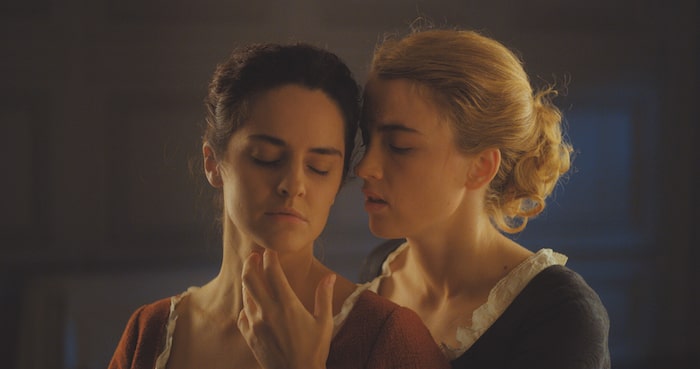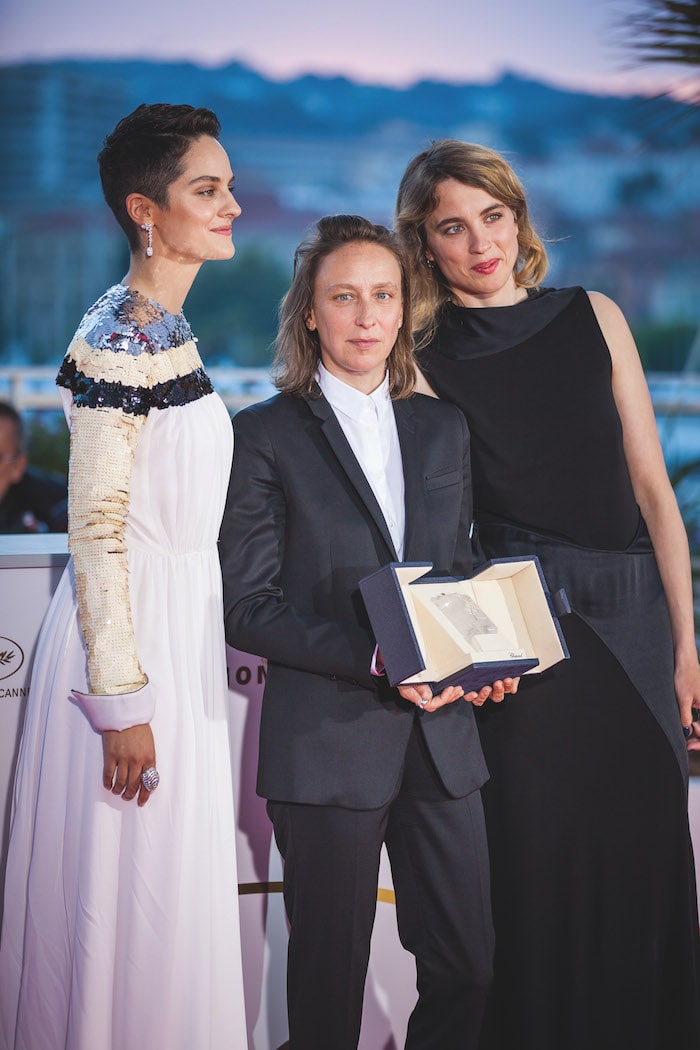French Film: Portrait of a Lady on Fire

In her fourth feature film, Céline Sciamma explores the dynamics of female relationships in a world where women have no power or control over their own lives. Lanie Goodman finds out about the movie, the director’s third collaboration with Adèle Haenel
To describe French director Céline Sciamma’s latest film as a period drama would be misleading. Although it is set in Brittany somewhere around 1770, there’s a certain modernity about the way the characters conduct themselves when left to their own devices that defies the stereotypes of 18th-century costume dramas. That being said, none of it is anachronistic – just one of the reasons, perhaps, that the film received such warm critical acclaim when it premièred at the Cannes Film Festival last May and was subsequently awarded the Best Screenplay prize by the jury. Portrait of a Lady on Fire is Sciamma’s fourth feature film, and her third collaboration with 30-year-old actress Adèle Haenel, whose career was launched in Naissance des pieuvres (Water Lilies, 2007), a coming-of-age story about the sexual awakening of a girl in a synchronised swimming team.

IMAGES © LILIES FILMS
This new story is set in and around the remote castle of a widowed Italian noblewoman (Valeria Golino), who is trying to marry off her beautiful, willful daughter Héloïse (Adèle Haenel), fresh out of a convent to take the place of her recently deceased sister. As the prospective husband, an unknown wealthy Milanese nobleman, awaits a portrait of his bride-to-be, Héloïse fiercely refuses to sit for the artist and drives him off before he can finish his painting. We are led to believe that her older sister felt the same way, and jumped off a cliff rather than marry a stranger. The determined countess then hires young artist Marianne (Noémie Merlant) to paint her daughter’s portrait in secret, passing her off as a lady’s companion.

IMAGES © LILIES FILMS
The two women walk the seaside bluffs in silence, while Marianne steals looks at her subject’s face, memorising each feature. As their relationship develops, Marianne ultimately becomes disgusted with her unsuccessful attempt to capture her mistress’s face and finally confesses the ruse to Héloïse. However, far from feeling betrayed – and much to the surprise of the countess – Héloïse agrees to pose for her portrait. When the countess leaves on a brief voyage they are left on their own with Sophie (Luàna Bajrami), the young, naive house servant. Unsurprisingly, all pretences at ladylike behaviour begin to slip away. The two women drink wine, smoke, dine together in the kitchen and try to help the pregnant Sophie, whom they befriend. The underlying central theme of Portrait is women’s lack of choice when it comes to marriage and children, and how this bars the way to freedom and equality.
Smoldering Romance
There’s also a painterly dynamic that involves seeing, and perhaps truly being seen, through the eyes of another woman. As Marianne captures the enigmatic half-smile of her subject after hours of sitting, the smouldering romance between the two women becomes increasingly intimate. From the gorgeously framed sequences of artist and model, their emotions lead them to candlelit evenings together and the sensual discoveries of first-time love. However, their amorous liaison is doomed to be short-lived: the moment Héloïse’s portrait is completed, the canvas will be sent to Milan to her promised husband and all that will be left is the memory of their desire.

IMAGES © LILIES FILMS
All this stands in contrast to Sciamma’s previous films, Tomboy (2011) and Girlhood (Bande de filles, 2014), which both feature a cast of young, non-professional actors in contemporary times. What prompted her to explore the 18th century? “It was a period when there was a flourishing arts scene of women painters,” Sciamma explains. “And they had careers – there were hundreds of them – although none of them went down in history.” We are sitting in a small room on the upstairs terrace of UniFrance, away from the clamour of the Cannes festival crowds.
“I didn’t feel as if I was taking a step into the past,” she adds cautiously. “It was a story that hadn’t been told, so the film speaks from today.” She pauses, then smiles. “It allowed me to be braver about what has been at the centre of my work so far. First, about the mise-en-scène: I wanted to make a romantic film. It was like a new playground for me, where you can express more in a bigger way.”

IMAGES © LILIES FILMS
The film, which was shot in just six weeks on the rocky shores of Brittany and in a studio near Paris, also presented a new set of challenges, Sciamma acknowledges. “For instance, the castle where we filmed hadn’t been used since the period. We didn’t touch anything – the colour of the walls, the floors – we just accessorised it in a very minimalist way, so I did less intervention on the set. It was less theatrical. And I was also obsessed with the light, trying to make each frame like a painting. I wanted to create a Gothic Brontë sisters mood in the landscape by the cliffs, but the weather that week was very sunny,” she concludes with a laugh.
“IT WAS A PERIOD WHEN THERE WAS A FLOURISHING ARTS SCENE OF WOMEN PAINTERS – ALTHOUGH NONE OF THEM WENT DOWN IN HISTORY”

IMAGES © LILIES FILMS
For the 40-year-old writer and director, it was also a new step to work with established actresses instead of newcomers. “When you’re dealing with young people, you’re in charge and you have to compose with their limits. With professional actresses, you’re less lonely; they give you their craft, their experience. They propose much more, plus you’re not responsible for what they will become,” she says.
Adèle Haenel, whose off-screen relationship with Sciamma has since evolved (at the 2014 César awards ceremony Haenel publicly declared her love for her partner), elaborates on her own preparation for the role of Héloïse, the artist’s muse.

IMAGES © LILIES FILMS
“What interested me was to blend into Noémie’s gaze and give the impression that my character was changing form through the way she was looking at me,” Haenel says. “It’s a look that goes right through to the spirit. And it was important that we didn’t position ourselves in relationship to men: that we were not under the scrutiny of the male gaze.”
Mysterious Character
Haenel, who appeared in three films presented at the Cannes Festival (the others were Deerskin and Heroes Don’t Die) is probably best known for her feisty role as an AIDS militant in the 2017 award-winning hit 120 BPM (Beats Per Minute). Unlike her mysterious character Héloïse, her answers are rapid-fire and straightforward. “I was inspired by the idea of a Japanese mask. Eventually, you can sense a crack in the mask she is wearing,” she says. “It was almost a sport – all the emotions came from the game itself. I had no fixed ideas about what I was going to do, I always wanted to surprise her. We didn’t rehearse a lot, to keep it fresh.”
From France Today magazine

IMAGES © LILIES FILMS
Share to: Facebook Twitter LinkedIn Email
Leave a reply
Your email address will not be published. Required fields are marked *



